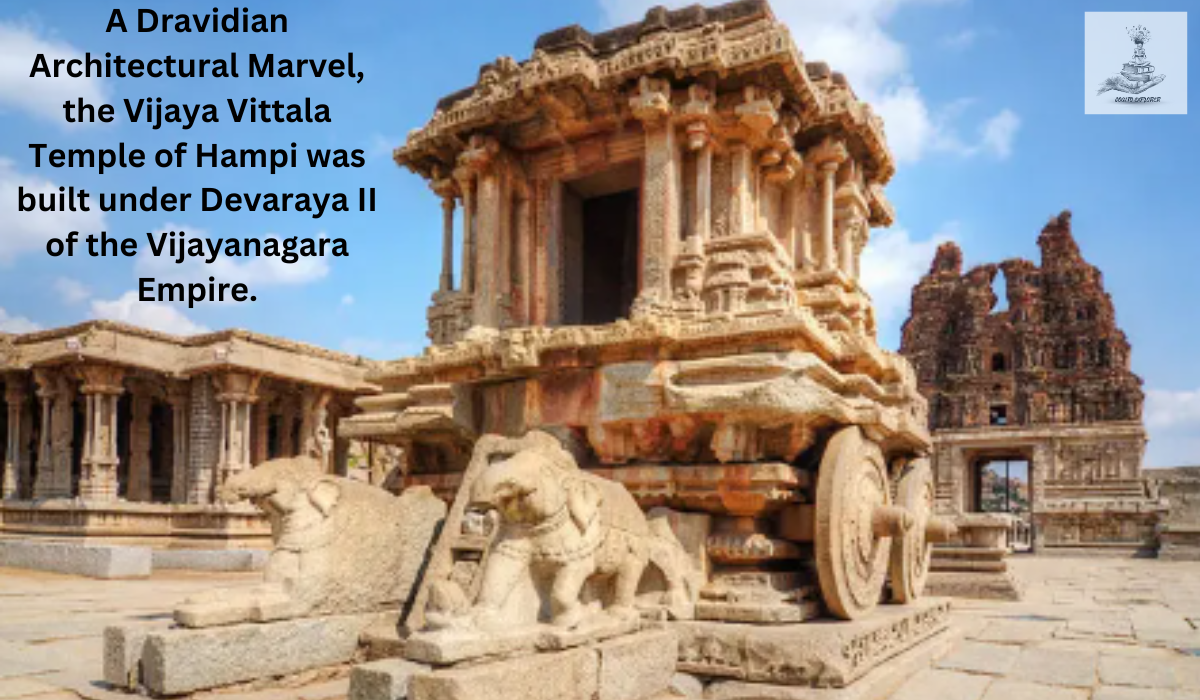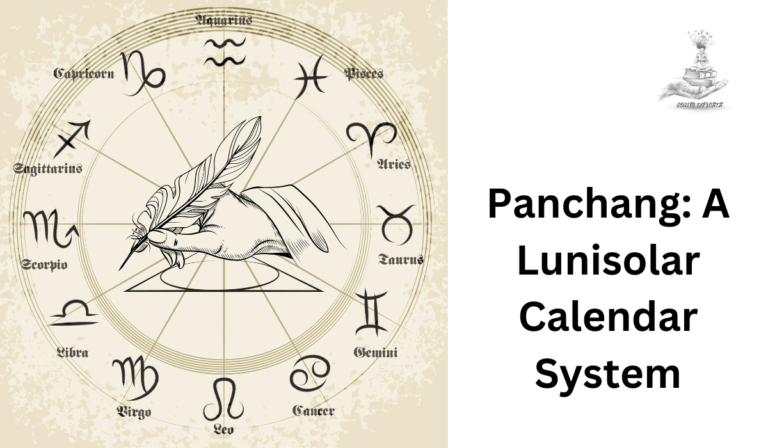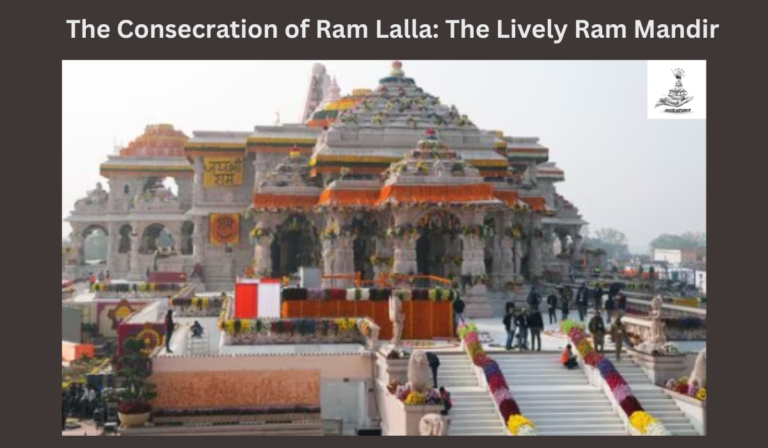Vijaya Vittala Temple: Origin, Architecture, Places To Visit Near Temple
The origins of the Vittala Temple trace back to the 15th century AD, under the reign of King Devaraya II of the Vijayanagara Empire. Over time, successive kings contributed to its expansion and embellishment, shaping it into the grand complex it is today.
Historical records from the 16th century refer to this site as Vitthala, with the temple sprawling over approximately a kilometer. Referred to as Vijaya Vittala, the temple’s name possibly celebrates victorious moments. This UNESCO World Heritage Site beckons travelers from around the globe to delve into its rich history and architectural marvels.

One popular legend revolves around a devoted sage named Pundalika. According to the story, Pundalika was an ardent devotee of Lord Krishna. His devotion was so sincere that he would serve his aging parents with utmost care. Pleased with his devotion, Lord Krishna decided to visit Pundalika. When Lord Krishna arrived at Pundalika’s home, Pundalika was busy serving his parents and asked the Lord to wait until he finished his duties. Impressed by Pundalika’s devotion to his parents, Lord Vittala stood on a brick and waited for Pundalika to complete his tasks. This imagery is often associated with the depiction of Lord Vittala standing on a brick in some temples.
A Dravidian Architectural Marvel
The Vijay Vittala Temple is a splendid example of Dravidian architecture found in South India. It’s known for its intricate carvings and impressive structures. Divided into three parts – Mukha mandapa, central rangamandapa, and sukhanasi or garbhagriha – the temple complex features various shrines and pavilions. Originally, a tower stood above the Garuda shrine, shaped like a stone chariot, but it was demolished in the 1940s.
The Stone Chariot at Hampi
The Stone Chariot at Hampi is a famous temple dedicated to Lord Vittala, a form of Vishnu. It resembles traditional chariots used in temples and is carved from a single rock. Built in the 16th century by King Krishnadevaraya, it’s a masterpiece of Vijayanagara Empire art inspired by the Konark Sun Temple. The chariot sits on a platform adorned with mythical battle scenes. Originally, horse sculptures adorned it, but now elephants replace them. The chariot is renowned for its hidden links and intricate carvings. It’s depicted on India’s 50 rupee note and once painted in bright colors. Today, traces of color remain beneath its surface.
Musical Pillars: A Melodious Marvel
The Ranga Mantapa features 56 musical pillars, known as the SaReGaMa pillars, which produce musical notes when tapped gently. These pillars, designed like musical instruments, support the mantapa’s ceiling alongside smaller pillars. Each main pillar is surrounded by seven minor pillars emitting distinct musical notes, creating sounds resembling string, percussion, and wind instruments. Interestingly, when struck with sandalwood, the pillars produce rhythmic sounds akin to SaReGaMa. Despite the mystery surrounding this phenomenon, it continues to intrigue visitors, inviting them to experience the enchanting chords firsthand.
Maha-Mandapa
The Maha-Mandapa, also called the Sabha Mandapa, sits directly in line with the rectangular courtyard, facing the Stone Chariot. It leads to the Garbha Griha on its opposite end. The elevated open hall, accessed by steps with elephant balustrades, features massive columns made of single granite blocks. These columns, known as the Vittala Temple Musical Pillars or SAREGAMA pillars, produce musical notes when tapped. The Maha Mandapa consists of four smaller halls. Each pillar surrounding the chamber is adorned with carvings of musicians, dancers, and drummers, earning the eastern hall the nickname “musician’s hall.” The southern hall is characterized by Yalis, mythical creatures, while the northern hall showcases pillars featuring Narasimha, the man-lion incarnation of Vishnu. Notable carvings include Narasimha slaying Hiranyakashipu with Prahlada depicted below in prayer. The sanctum lies a little further ahead.
Garbha Griha of the Vijay Vittala Temple
The Garbha Griha of the Vijay Vittala Temple is directly behind the Sabha Mandapa, in line with the Stone Chariot. Access to it is available through a door or a flight of steps on the southern side. At the entrance of the Garbha Griha stand traditional Dwarapalakas or guardsmen, although one statue remains partially damaged. Inside, the Garbhagriha is empty, lacking the deity’s idol. Carvings on the Gopuram and outer walls give an idea of how the idol may have appeared. The Vimana over the Garbhagriha features carvings of Gods, Goddesses, and Vittala. Around the sanctuary, a covered circumambulatory path allows for movement. The outer walls display Kumbha-Pankajas and other iconography associated with Lord Vishnu.
How to Reach Vittala Temple:
- Hampi serves as the gateway to Vittala Temple.
- From Bengaluru, it’s approximately 376 km, and from Hubli, it’s about 165 km.
- Located 9 km from Hampi (or a 2.3 km walk) and 5.5 km from Kamalapur Bus Stand.
- Hosapete railway station serves as the nearest railway station for train travelers.
- The closest airport is Jindal Vijaynagar Airport.
Best Time to Visit Vittala Temple:
- Optimal time: October to March.
- Hampi is situated south of the Tungabhadra River.
- Hosapete in Karnataka hosts this historical city.
Vittala Temple Entry Fees:
- For Indian adults and adults from SAARC/BIMSTEC countries: INR 30 per person.
- Entry fee for adults from other countries: INR 500 per person.
- Children under 15 years of age enter free of charge, regardless of nationality.
Places to visit near Vijaya Vittala Temple:
Pattabhirama Temple:
- Dedicated to Lord Rama and Goddess Lakshmi.
- Built by Vijayanagara King Achyuta Deva Raya in the 16th century.
- Simple ornamentation compared to other temples in Hampi.
- Faces east towards a large water tank and a ruined chariot street.
- Entry through a gate on the southern wall.
- The main shrine is at the center with Kalyana mandapa to the southeast.
- Fortified by strong walls.
- Located 6.3km from Vijaya Vittala Temple.
Queen’s Bath:
- Built 500 years ago near the Vijayanagara Empire’s main palace.
- Constructed by Achyuta Raya for royal women.
- Indo-Islamic style architecture.
- Rectangular with no ceiling, open to the sky.
- Sunken bath with stone steps and freshwater canals.
- Dress changing rooms and royal living area.
- Located 6.5km from Vijaya Vittala Temple.
Lotus Mahal:
- Royal residence for Vijayanagara Empire’s women.
- Combination of Hindu-Muslim architecture.
- Two-storied with a symmetrical layout and pyramidal towers.
- Geometric archways resemble lotus petals.
- Watchtowers for guards.
- Specially designed for cool temperatures with water-filled tubular structures.
- Located 7.1km from Vijaya Vittala Temple.
Elephant Stables:
- Built in the 15th century for royal elephants.
- Indo-Islamic architecture.
- Oblong structure with domed chambers.
- Each chamber can accommodate two elephants.
- Metal hooks for tying elephants.
- Entrance through the Zenana Enclosure.
- Part of the parade for ceremonies.
- Located 7.2km from Vijaya Vittala Temple with a 30 INR entry fee.
Also Read: Khatu Shyam Ji Mandir
Frequently Asked Questions:
What is Vijaya Vittala Temple?
Vijaya Vittala Temple is a significant Hindu temple dedicated to Lord Vittala, situated in Hampi, Karnataka, India.
Where is Vijaya Vittala Temple located?
Vijaya Vittala Temple is located in Hampi, a UNESCO World Heritage Site in the Bellary district of Karnataka, India.
What are some notable features of Vijaya Vittala Temple?
Notable features of Vijaya Vittala Temple include its stunning architecture, the iconic stone chariot, musical pillars, and intricate carvings depicting various mythological stories.
Are there any notable attractions near Vijaya Vittala Temple in Hampi?
Yes, Hampi boasts numerous historical sites and temples, such as the Virupaksha Temple, Lotus Mahal, Elephant Stables, and the Hemakuta Hill temples.
Is Vijaya Vittala Temple in Bangalore?
No, Vijaya Vittala Temple is not located in Bangalore; it is situated in Hampi, which is approximately 350 kilometers away from Bangalore.
Is there a Wikipedia page for Vijaya Vittala Temple in Hampi?
Yes, you can find detailed information about Vijaya Vittala Temple and its historical significance on its Wikipedia page dedicated to Hampi.
Is there a Vijaya Vittala Temple in Nelamangala?
No, Vijaya Vittala Temple is not located in Nelamangala. It is specifically situated in Hampi, Karnataka. However, Nelamangala may have other temples or historical sites worth exploring.







